
Scientists had long known an Indian rice variety, unromantically dubbed FR13A, that could handle a week or more of complete submergence and recover sufficiently to offer a reasonable harvest. Rice, although often grown in standing water, will drown like any other plant if hit with severe flooding.
Despite its remarkable properties, FR13A (FR stands for “flood resistant”), as a low-yielding traditional variety grown across limited areas in the Indian state of Orissa, was never expected to make a big impact on a wide scale.
Nevertheless, rice breeders—including David Mackill, a young Californian plant breeder working at the International Rice Research Institute in the 1980s—saw the potential to breed FR13A’s sought-after trait into some of the modern high-yielding rice varieties planted over vast flood-prone areas across Asia.
His reasoning, which emerged from discussions with IRRI deepwater rice breeder Derk HilleRisLambers, was that a flood-tolerant version of a popular modern variety could have an enormous impact. In Bangladesh and India, for example, farmers suffer annual crop losses because of flooding of up to 4 million tons of rice—enough to feed 30 million people. To the farm families and workers, and to the poor consumers who rely on rice for the bulk of their food, flooding can be truly disastrous.
So, the IRRI breeders—people who spend their careers mixing the genes of plants to develop new varieties that can handle harsh climates, or resist diseases and pests,or cope with problem soils—tried. And they succeeded. Sort of. They created higher-yielding rice plants that could handle major floods, but they never even got close to releasing them to farmers. During the breeding process, which transferred to the modern varieties whichever genes were giving FR13A its flood tolerance, too many unwanted genes moved across as well. The result was poor-tasting, flood-tolerant rice that yielded no more than existing varieties. And so the idea moved to the back burner.
In 1991, Dr. Mackill left IRRI for the University of California (UC) at Davis. With FR13A still on his mind, he and his graduate student Kenong Xu took up the challenge of identifying the genes responsible for FR13A’s scuba abilities. They eventually pinpointed the precise stretch of DNA that made the variety so interesting, and named the assumed gene SUB1.
Dr. Mackill, who by now had returned to IRRI, realized that the FR13A game was back on. By that time, 25 years after the first breeding attempts, agricultural science had come a long way. A new “precision-breeding” method, known as marker-assisted selection (MAS; see On your mark, get set, select; also see From genes to farmers’ fields ), allowed breeders to do much of their work in the lab. The new method shortened the breeding process and vastly improved the precision with which specific traits could be moved from one variety into another. He and his team were able to transfer SUB1A into widely grown modern rice varieties without affecting other characteristics—such as high yield, good grain quality, and pest and disease resistance—that made the varieties popular in the first place.
By 2006, the first Sub1 varieties were ready for testing at IRRI. The researchers set up plots of what they hoped would be flood-tolerant versions of several varieties—IR64, Swarna, and Samba Mahsuri—next to plots of their non-Sub1 counterparts.
Once the plants had established themselves, the plots were flooded, completely submerging the rice for 15 days. Next, the water was drained to reveal muddy plots of limp, flattened, deathly looking plants.
Then, a remarkable thing happened. Within 2 weeks of the flood, almost all of the Sub1 plants recovered. They came back to life as if coached by Lazarus himself. A few scattered clumps of the original versions made a comeback, but there was no comparison. At harvest, the Sub1 rice yielded more than twice as much as its neighbor (click here to view a dramatic time-lapse video of the experiment).
With the Sub1 concept well and truly proved, seeds were sent for testing and refinement to national organizations in South Asia, including the Bangladesh Rice Research Institute (BRRI) and, in India, the Central Rice Research Institute (CRRI) in Orissa and Narendra Dev University of Agriculture and Technology in Faizabad, Uttar Pradesh. The trial results there were also extremely promising.
In short, scientists had developed rice that could handle more than a week’s flooding with almost no loss of yield (1 week is enough to severely dent the harvest of the nontolerant versions) and would recover to produce a reasonable yield after even 2 weeks’ submergence (enough to almost wipe out nontolerant versions).
Aside from the flood tolerance, the new varieties were virtually identical to their counterparts: farmers would be able to manage them in exactly the same way and, in the absence of flooding, achieve the same yield.
________________________________________________________________________________


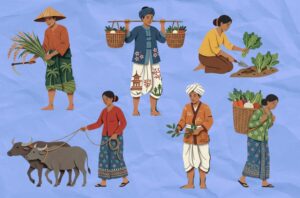
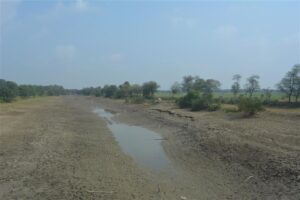
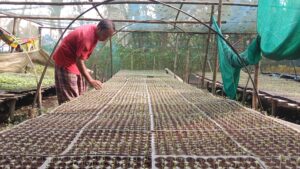
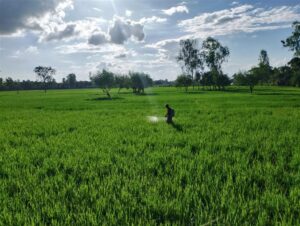
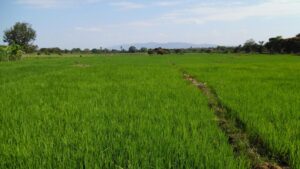
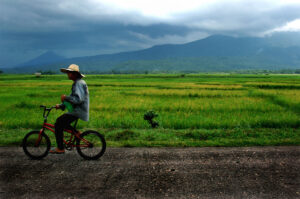
Thank you for writing about scuba rice. However, for clarification, scuba rice is not a genetically modified variety as you wrote in your blog. Scuba rice applies to all rice varieties that contain the submergence-tolerance gene known as SUB1. The gene was identified from FR13A. an Indian rice variety from Orissa. Therefore, Scuba or flood-tolerant rice varieties do not contain any foreign (non-rice) genetic materials.